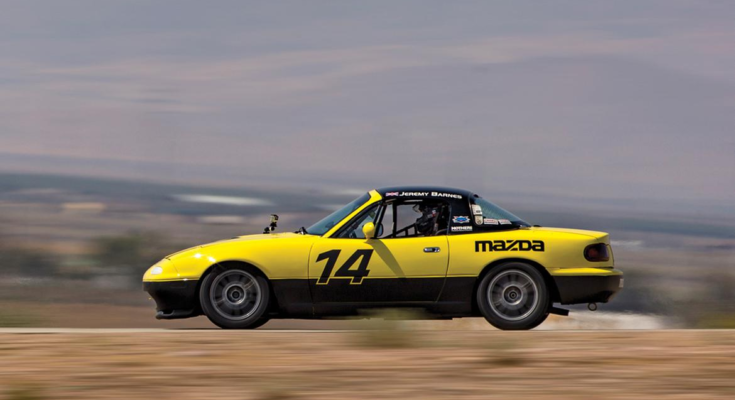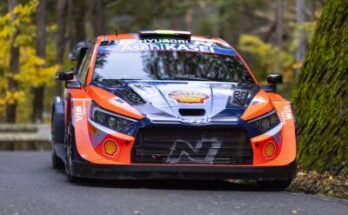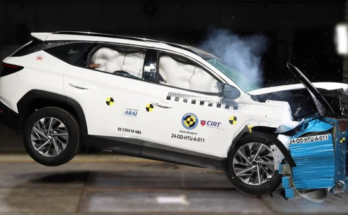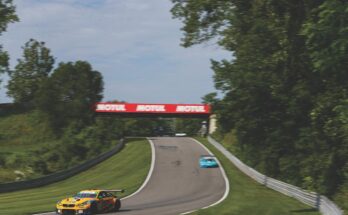[Editor’s Note: This article originally appeared in the February 2016 issue of Grassroots Motorsports.]
The Mazda MX-5 Miata: It’s really the gift that keeps on giving, isn’t it?
Those of us who were around in 1989 knew that Mazda had delivered something truly special in the 1990 Miata–and yes, we know Mazda might prefer that we call them MX-5s, but “Miata” is just too easy to type.
At the time, we were less than a decade removed from the last production MGB, and while that little Brit had grown a bit grim in its later years, at least it was a proper, affordable sports car.
What did we have between 1980 and 1990 that belonged under the “affordable” umbrella? The Chevrolet Cavalier Z24 convertible? The Ford Mustang V6 convertible? The Volkswagen GTI?
Of course, we now know there was a light at the end of that ’80s-spanning tunnel. And if any publication were to ring in this bright new era of sports cars, it would be Motor Trend. After all, their Car of the Year award has always had one finger on the pulse of enthusiasts. That’s why, for 1990, they picked–yes–the Lincoln Town Car!
Wait, what?
The Lincoln Town Car. Followed in 1991 by the Chevrolet Caprice Classic LTZ. Followed in 1992 by the Cadillac Seville Touring Sedan.
Rumor has it, this was a period when Motor Trend’s ad sales team expected to receive a loaner fleet of the winning model for the duration. If true, this didn’t bode well for the Miata, which wouldn’t have seated many sales clients comfortably.
To this day, the Miata has never won Motor Trend Car of the Year–this despite the fact that the little Mazda has taken on multiple challengers, from the Australian-built Mercury Capri to the Honda S2000 to two generations of Toyota MR2s, and sent them all to the sidelines. (For what it’s worth, though, GRM editors named the Miata the most significant car of the past 25 years in 2009.)
Even more remarkable: Name another model that has been in production for 25 years that doesn’t have a substandard offering in the mix.
And that goes for the Miata race cars, too: every generation, starting with the 1990-’97 NA and on to the 1999-2005 NB, 2006-’15 NC and all-new ND. We know because Mazda’s race-minded public relations staff–notably Dean Case and his boss, Jeremy Barnes–assembled examples of all four chassis, rented out the Streets of Willow track north of Los Angeles, and turned a handful of journalists loose.
Nearly a million Miatas have been sold, and about 3000 have been turned into race cars. Here’s the story of four.
So you can chart progress, we listed the fastest time of the day for all four cars. Pro racer Randy Pobst, now a journalist for Motor Trend, logged the best laps for the NA, NB and ND. Fastest time in the NC was set by Philip Royle, editor of the SCCA’s SportsCar magazine and himself a busy racer.
As far as prep, all four cars followed a similar formula: stiffer suspension parts, sticky yet street-legal race tires, free-flowing exhaust and the necessary safety equipment. The engines and gearboxes were factory-spec pieces.
Miata NA
FAST TIME: 1:14.154
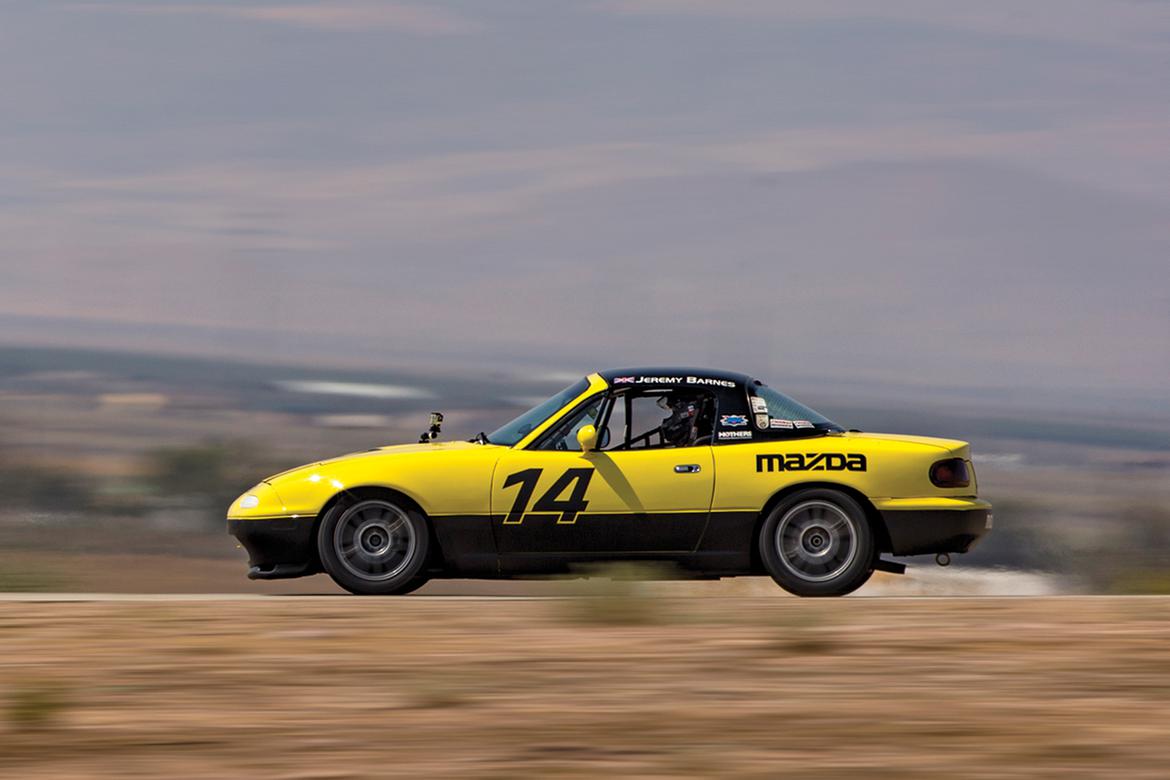
When we said “Mazda’s race-minded public relations staff,” we meant it, as the aforementioned Jeremy Barnes owns and regularly races the cute (sorry, but it was) yellow NA racer. He competes in the Spec Miata class, which allows NA and NB cars.
With just 115 horsepower from the 1.6-liter four-cylinder, Barnes’s No. 14 showed all the characteristics that make the Miata a perfect car for both beginners and experienced racers. Steering was light but not twitchy, and the nominal horsepower made it vitally important to maintain momentum. Instead of seeking the fastest line through the corners, we looked for the line that allowed for the most exit speed.
As with any race car, you can get into trouble with this one. In this case, that might be from the modest brakes, which no one would confuse with carbon. But keeping costs down was and is critical, and if you decide you want to spend enough to make an NA into a killer track day car, you might as well just buy something that’s already faster.
Sadly, we didn’t get to see Barnes’s car in the optimum light, as several of the journalists before us had leaned way too hard on its already-taxed clutch. We had to be even more patient leaving corners than usual as we waited for the clutch to catch up.
Barnes told us to go for it anyway, but true grassroots racers who have actually had to pay for their own repairs are reluctant to thrash a hurting car, especially when it belongs to a friend.
Miata NB
FAST TIME: 1:13.736
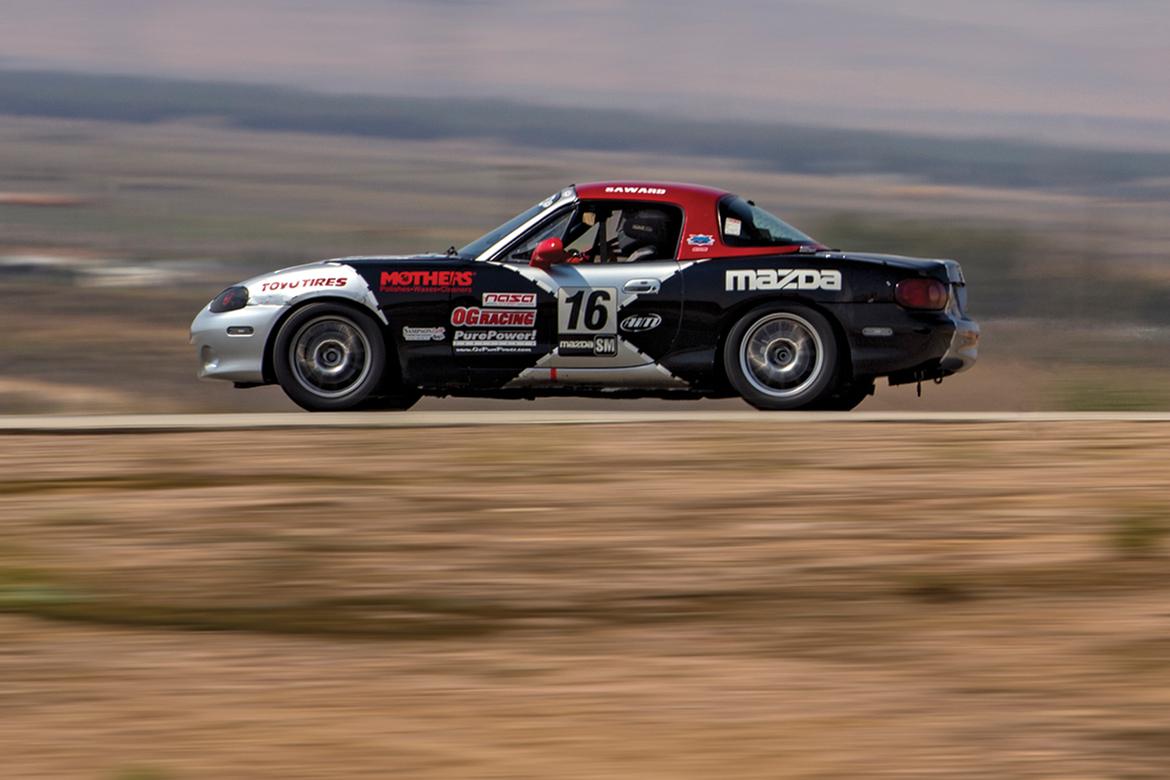
Owned by Mazda designer Ken Saward, No. 16 was a happy little car that we found very comfortable, both ergonomically and at speed. The extra power from the 1.8-liter engine didn’t mean we could now ignore momentum, only that a bad corner might lose us just one position instead of two or three. Like the NA, this one was also prepared for the extremely popular Spec Miata ranks.
The NB carried more than a hundred extra pounds over the NA, but we didn’t really notice it, perhaps due to an unfortunate life experience that had us carrying a few extra pounds, too. The NB still seemed very light on its feet, and we were surprised that it was only a half-second faster than the NA–although we wondered how the NA did so well with a wonky clutch.
Miata NC
FAST TIME: 1:12.882
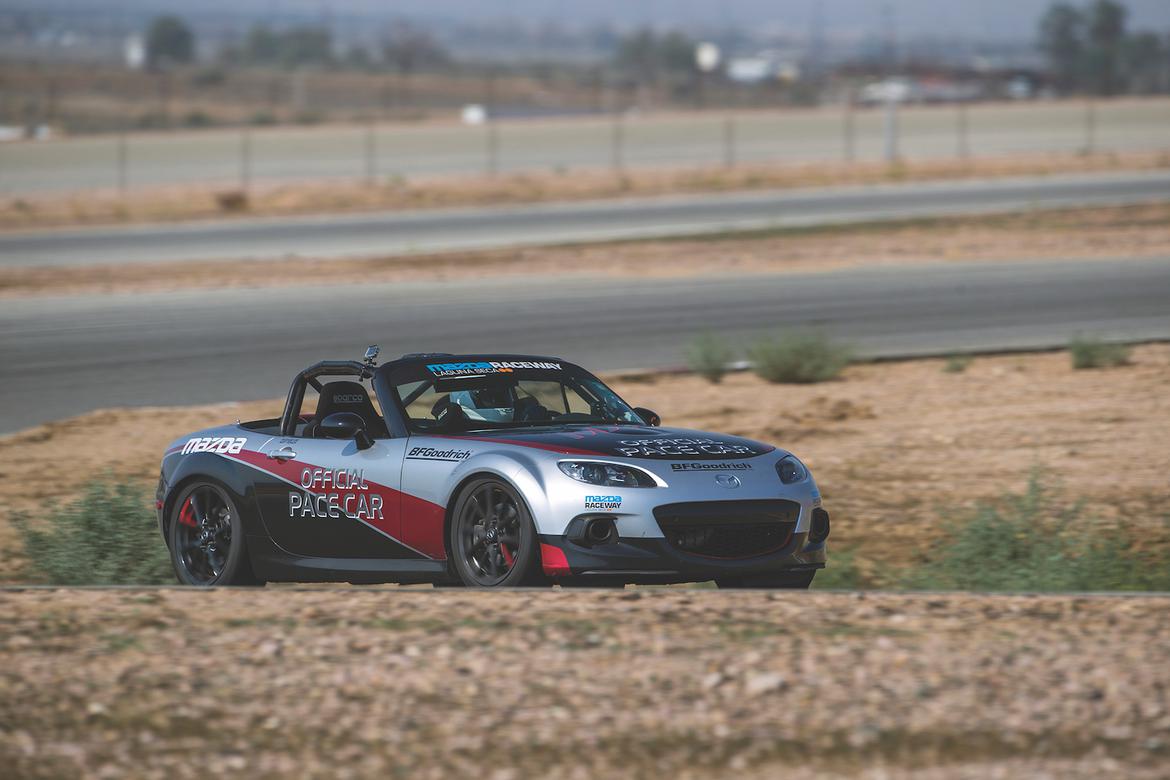
Tom Long, who pilots the Mazda SkyActiv Prototype in the IMSA WeatherTech SportsCar Championship series, may be the world’s best Miata driver. That’s appropriate, since he and his father, Glenn–owner of Long Road Racing in North Carolina–are building several dozen MX-5 Cup cars for the 2016 season. Like, all of the cars in the Battery Tender Mazda MX-5 Cup Presented by BFGoodrich will come from their shop. So Long is a good one to ask when it comes to these cars.
When he didn’t seem to like the NC as much as the other chassis, we wanted to know why. Like the rest, this car was also prepped to a spec, more or less–it was basically an outgoing MX-5 Cup car fitted with a passenger seat. Long said that he preferred a little bit of body roll, and this particular NC didn’t have any, set up as it was for duty as a pace car at Mazda Raceway Laguna Seca.
Yeah, maybe that was part of it. But you had to add in a particularly uncomfortable driving position, along with a front alignment that allowed for a very fast turn-in but zero natural unwinding. Say we went into a right-hand corner; unless we decisively steered back to the left, we’d be doing right-hand doughnuts until we ran out of gas. It was okay when we got used to it, but it wasn’t that much fun.
Still, the 170 horsepower and very planted rear end finally delivered the Miata from the strict momentum requirement, allowing for a little point-and-shoot action. Had it been the only Miata race car we drove all day, we would have liked it a lot better. Under the circumstances, though, it was the only one we weren’t wishing to take for more laps.
Miata ND
FAST TIME: 1:10.562
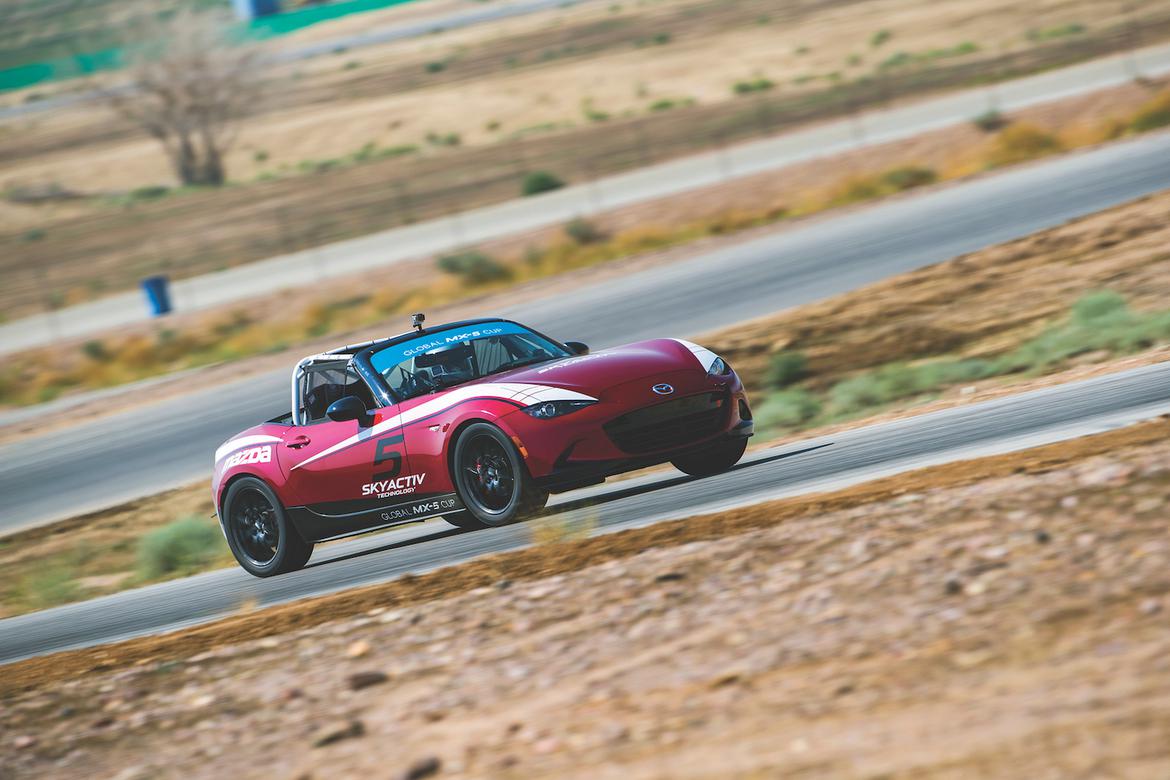
Yes, of course you’d assume that the newest car was the best one. Still, we were a little surprised by how much better the ND felt, especially since it’s down 15 horses over the NC. But it’s up on torque–to 148 ft.-lbs.–and lighter by about 150 pounds. And we’re pretty sure every journalist at Streets of Willow that day logged the fastest laps in the ND. We certainly did.
The engine, as you’d suspect, was silky smooth, though by the end of the day there was some evidence of a head gasket issue. This was the example, and the engine, that had been thrashed mercilessly as Mazda’s main development mule.
The six-speed transmission was as close to telepathic as it gets–we could think “fourth gear” and magically it was there. On the very low-mileage 2016 street cars we’d driven, the shifter was a bit stiffer. If more relaxed shifts are what owners have to look forward to after logging some miles, bring them on. Clutch engagement was light and sure, too. Miata manual transmissions have been textbook-good since the first 1990 model rolled off the boat, but you just couldn’t ask for more than this ND delivered.
The Brembo brakes were right there, linear all the way into the near-perfect, unobtrusive ABS. Mazda isn’t quite ready to announce the brands of the suspension bits, brake pads or eventual tires, but trust us, “lowest bidder” is not a factor unless it happens to describe the best option.
There was some surprising understeer in two corners, but we were told that was more a function of setup than anything inherent. We would have liked to play with the tire pressures, but there wasn’t time.
Tom and Glenn Long aren’t really doing anything to the ND that you couldn’t do yourself. In fact, they’ll be happy to point out what they’ve done, but much of it, like the beautifully welded cage, is pretty evident.
Also, this is the car (in left- and right-hand drive) that Mazda plans to race globally for years, and they’re working toward a major world championship. In 2016, the fledgling global finale will be at Mazda Raceway Laguna Seca. The winner gets a one-day test in the SkyActiv Prototype race car–which will, thankfully, be powered in 2016 by a gasoline engine.
This is the point in the story where, if we were the Motor Trend of 1990, we’d say, “We’d like to pick a winner, but they are all so good! And have you driven the new Lincoln Town Car?”
But this is the Grassroots Motorsports of 2016, and we’re calling it: While there has never been a bad Miata or a resulting bad Miata race car, the new ND model is an improvement in every area, both on the street and on the track. Did we expect anything less?
Comments

Great story, bro ![]()

Super good story. I like it.

350z247
New Reader
10/28/20 2:49 p.m.
“Name another model that has been in production for 25 years that doesn’t have a substandard offering in the mix.”
That’s because they are the “substandard offering”, excluding the lone Mazdaspeed. Miatas are entry level sports cars with great bones; proof that cheap doesn’t have to mean bad. However, they just can’t compare to higher market cars; all that research and devolvement money does actually count for something. While the Miata wasn’t as comparatively slow in the malaise years of the 90s, the lap time delta to the Americans, Germans, and slightly more expensive Japanese rivals has grown larger with each subsequent generation.
Miata manual transmissions have been textbook-good since the first 1990 model rolled off the boat, but you just couldn’t ask for more than this ND delivered.
From what I can tell this article was written back in 2016, before the ND1 transmission problems were known. Those of us with pre-2019 MX5s refer to them as glass transmissions. It’s not if it will break…but when. Mazda and the Global MX5 competitors got so tired of breaking transmissions that now a SADAV sequential is required. Sigh. Enthusiasts like myself are left out in the cold by Mazda.

350z247 said:
“Name another model that has been in production for 25 years that doesn’t have a substandard offering in the mix.”
That’s because they are the “substandard offering”, excluding the lone Mazdaspeed. Miatas are entry level sports cars with great bones; proof that cheap doesn’t have to mean bad. However, they just can’t compare to higher market cars; all that research and devolvement money does actually count for something. While the Miata wasn’t as comparatively slow in the malaise years of the 90s, the lap time delta to the Americans, Germans, and slightly more expensive Japanese rivals has grown larger with each subsequent generation.
Breaking News: more expensive car is faster

thatsnowinnebago (Forum Supporter) said:
350z247 said:
“Name another model that has been in production for 25 years that doesn’t have a substandard offering in the mix.”
That’s because they are the “substandard offering”, excluding the lone Mazdaspeed. Miatas are entry level sports cars with great bones; proof that cheap doesn’t have to mean bad. However, they just can’t compare to higher market cars; all that research and devolvement money does actually count for something. While the Miata wasn’t as comparatively slow in the malaise years of the 90s, the lap time delta to the Americans, Germans, and slightly more expensive Japanese rivals has grown larger with each subsequent generation.
Breaking News: more expensive car is faster
Not just more expensive to buy, but more expensive to run. A big part of the appeal of a Miata racecar is the low cost of consumables. You can get a turbo I4 Camaro 1LE for around the cost of an ND Club, but expect to pay about double for everything that the car uses up.

350z247 does bring up an interesting point; for some people Miata lap times are such that for some people will spend the extra bit of cash to get something that turns faster lap times.
My take is and has been this; I driven some really cool cars on track, almost every Porsche ever made from 356 to GT3RS, raced prepped Vipers and some pretty rapid single seat race cars and anytime someone offers me a chance to drive a Miata I jump on it. They are the most fun car ever.

350z247
New Reader
10/28/20 10:11 p.m.
In reply to ShinnyGroove (Forum Supporter) :
That specific example isn’t worth it as the I4 in the Camaro is hardly inspiring, but there are other examples of cars that are worth the added costs. I could buy a used E92 M3 for 10K less than the top of the line ND. Sure, I’ll spend more in consumables, but I’d rather pay more for a car I’m excited to drive than settle for the bare minimum. That said, I can’t afford to run a 458 GT3 no matter how badly I want to; so, we all settle to some extent.

In reply to 350z247 :
You are correct we all settle to.some degree BUT
If I hit the mega-super-bucks-jumbo lotto tomorrow I will but a vintage Formula Super Vee or Formula Atlantic or SCCA P1 car and you guessed a Miata track day car.
Miatas are fun as he’ll to hoon around in because your traveling at relatively low speeds so you can get away with so much in them. We’ve owned two Miatas and I never considered them as settling.

I own three race cars.
A 650 HP Camaro
A Crossle 32F Formula Ford (pardon the mess in the shop)
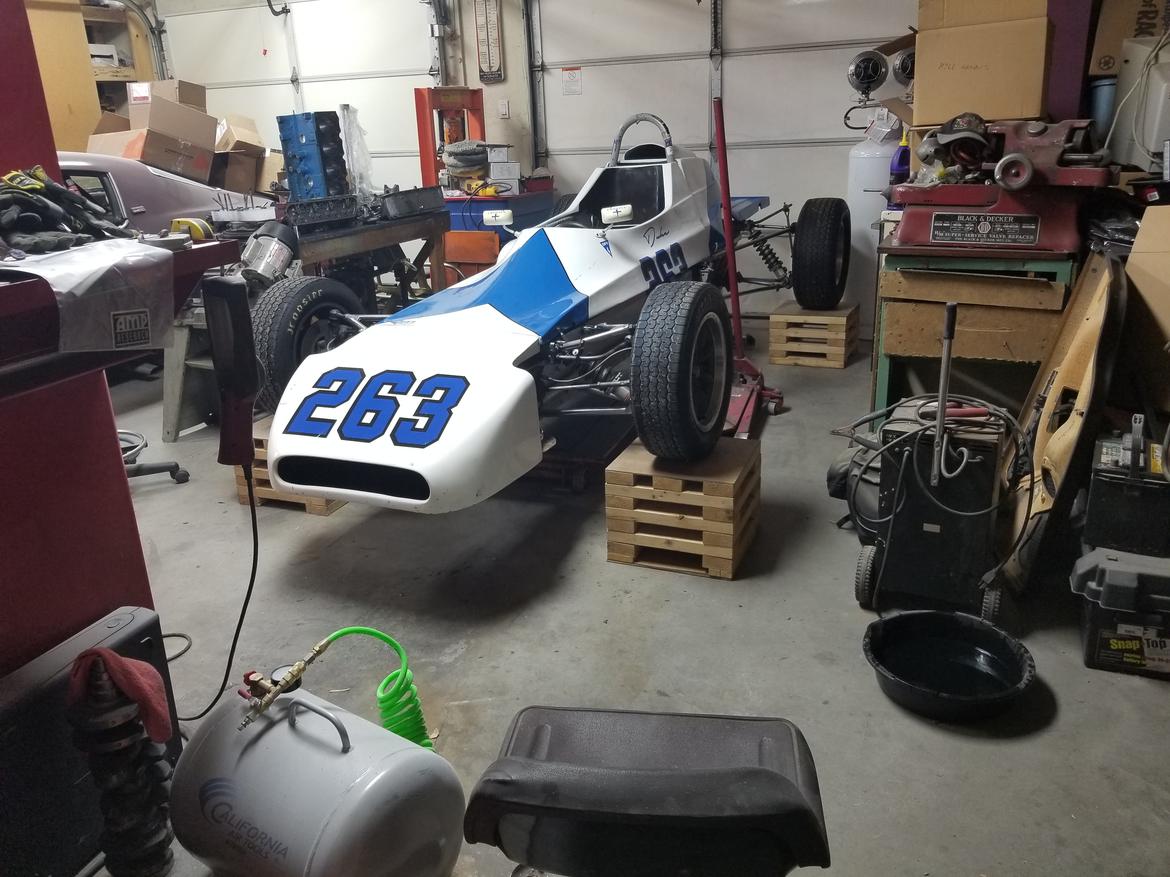
And a Spec. Miata
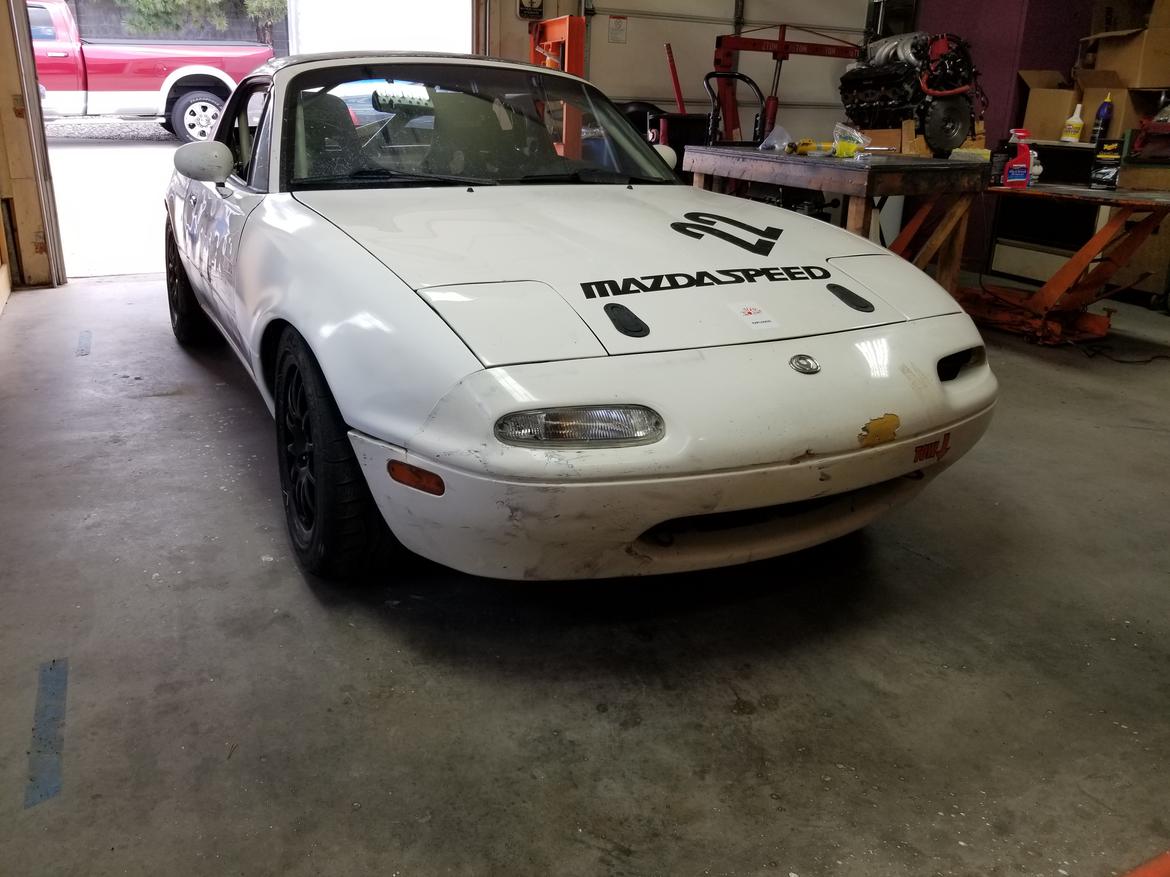
The Miata is the slowest of the three but it’s also the one that gets raced the most and I wouldn’t say that any one of them is more or less fun to drive than the other. The Miata is without question the cheapest and most reliable.
Displaying 1-10 of 37 commentsView all comments on the GRM forums
You’ll need to log in to post.
